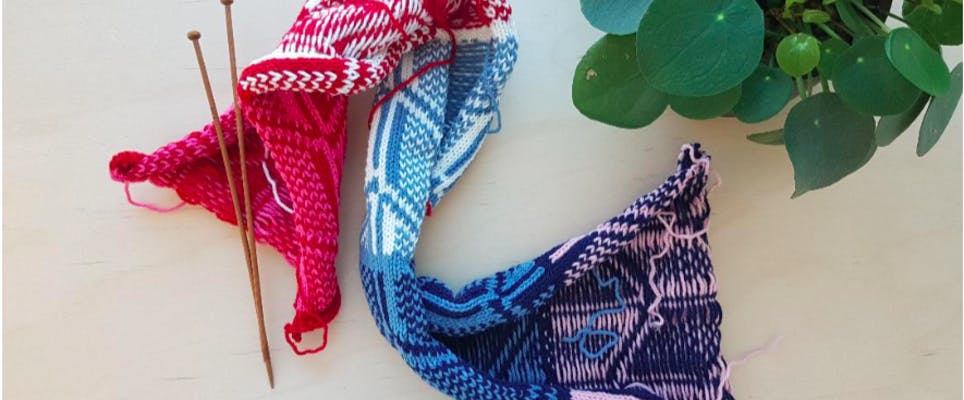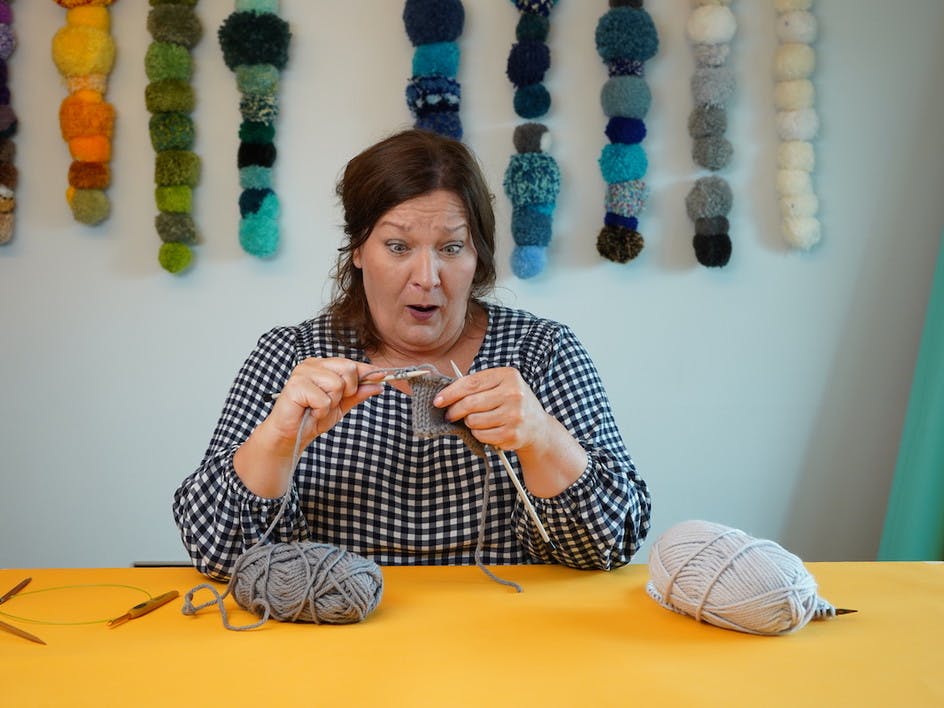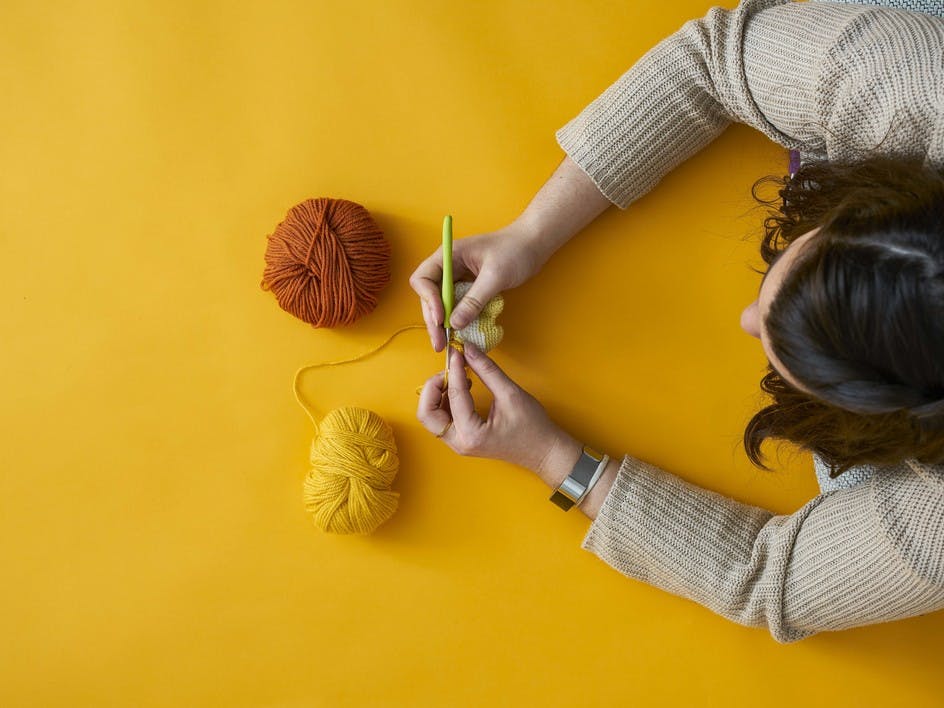6 ways to stop your knitting from curling
Published on June 30, 2015 By Elizabeth Bagwell 4 min read
Having trouble with stopping your knitting from curling? Not to worry! Here we talk you through the reasons to why your knitting is curling , how to stop your knit fabric from curling and ways to prevent this from happening in future projects.
Why does knitting curl?
Stockinette stitch (also known as stocking stitch) rolls because there’s a difference in tension between the knit stitches on purl stitch on either side of the work. If you cast on and knit a stocking stitch square, bind off and let it go it will often roll itself into a tube.
A project that can’t roll at both ends (such as a sweater or even a baby hat) will tend to curl up at the loose edge. If you pin both cast on and cast off down, it may roll at the sides. This is known as a rolled brim or rolled edge and is a design feature on many patterns. But if it’s not what you had in mind, what can you do?
How to stop your knitting curling
Don’t knit stocking stitch at the cast on or cast off edge
Swapping out a rolled edge for a flat one is easy: replace the rows of stocking stitch near the edge of the pattern with a stitch that doesn’t roll. Most stitch patterns don’t, including rib, garter stitch and moss stitch or seed stitch.
Block and steam your knit fabric
Rolling is not usually a problem that will block out. Stocking stitch rolls because there’s a difference in tension between the stitches on one side and the other. This isn’t something you can change as you knit – it’s down to shape of the yarn in the stitch.
As a result, while your project may look perfect while it’s pinned out on the bed blocking it will almost always start to curl as soon as you take out the pins and start wearing it.
Use a felt or acrylic yarn
Changing the nature of the yarn can stop rolling. Stitches in felted projects are too tightly packed to curl and acrylic that has been ‘killed’ (heated beyond the point where it can retain its elasticity) often doesn’t roll either. However, in both cases, the project will be quite different afterwards and will be a different size, texture and fit. Definitely try this one on a swatch first.
Add a garter stitch or moss stitch border
To stop a completed project from rolling at the edge you can pick up and knit a band in another stitch, or knit one and sew it on. Both these options will make the item longer or larger, so you may find it’s not appropriate for every project. Using garter stitch or moss stitch to create your border are great options! The extra band doesn’t have to be knitted – you can used cloth or crochet instead.

Crochet a border
One of the easiest ways to add a border is to crochet one on. Few crochet stitches roll and the weight of the extra fabric will keep the stocking stitch in line. A simple row of single crochet may be enough to do the trick, but you can also add colorwork or a complex lace motif as a feature to brighten up a plain cardigan or lengthen a jumper that’s been out grown.
Mixing knitting and crochet isn’t just for emergency repairs. If you have trouble starting a crochet project from a chain, crocheting around a knitted panel is a great way to start. You can also use crochet to stitch two pieces of knitting together so it’s well worth having both skills.
Add tape, lining or backing fabric
Add a bit of scaffolding to the wrong side (hidden side) with stiff cloth or sewing tape. The extra weight may also help hems hang flatter. A risk with this technique is that the knitted fabric will fold around the tape so instead of a rolled hem you’ll have a folded one. Try it on a swatch first and then pin and check it’s working before you sew.




